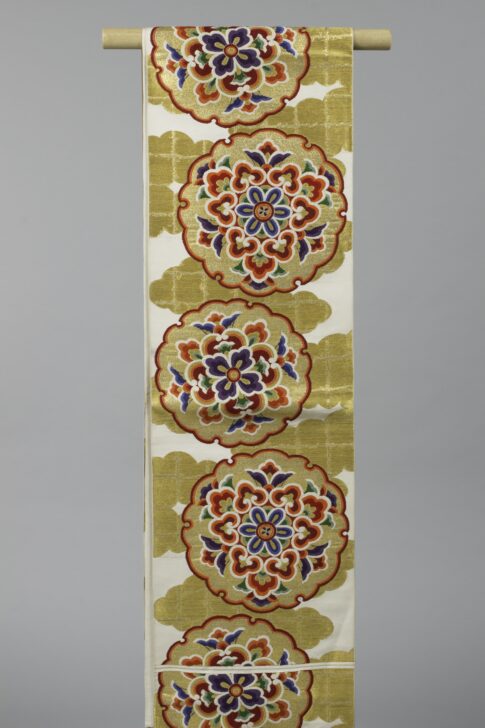Obi
Japanese

Description
Subject Matter:
This is a Nishiki, Nishijin, fukuro obi in rokutsuu gara.
Fukuro Obi is double-layered single sided obi in which two separately woven surfaces and back pieces of cloth are stitched together. This type of obi is typically only worn at weddings or other formal occasions.
Nishijin-ori textiles were developed in the Nishijin area of Kyoto city and has dominated the production of high-quality woven textiles since the fifteenth century. The production of Nishijin textiles is very complex and is specialized in five main areas—designing and creating patterns, producing silk threads, producing tools (including weaving machines), weaving, and final sewing—each executed in a different workshop.
Nishiki is a type of vibrant silk brocade with vivid and luxurious images using various colorful and metallic (mainly gold and silver). Nishiki brocade is mainly produced in the Nishijin area of Kyoto.
Gara refers to the orientation, arrangement, and surface area of the patterns and pertains to a specific trend and obi tying style.
The Rokutsuu gara type derives from a specific tying style, the Otaiko musubi. The areas of the obi that are visible in this style are patterned while the parts that are obscured are left blank. In terms of surface area, roughly sixty percent is patterned while forty percent is left blank.
Physical Description:
white fukuro (single-sided) obi with gold tiled clouds and yukiwa (petaled snowflake) motifs containing various gradated red, white,orange, blue, and violet karahana (stylized Chinese floral motifs).
Usage Rights:
If you are interested in using an image for a publication, please visit https://umma.umich.edu/request-image/ for more information and to fill out the online Image Rights and Reproductions Request Form.